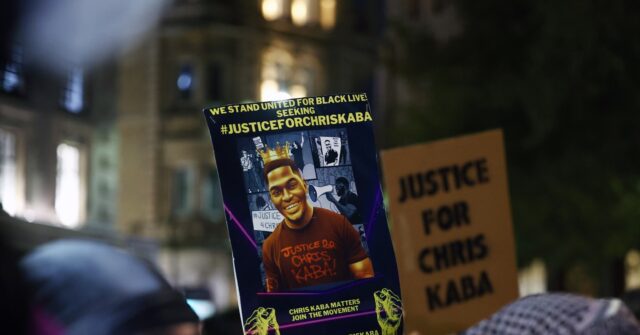Chris Kaba’s death in September 2022, during an encounter with police in London, has drawn significant public attention and sparked an outcry echoing the Black Lives Matter movement in the U.S. Initially heralded as a victim of police violence, Kaba’s posthumous image has been altered following revelations about his criminal history, which include membership in a notorious gang and a pattern of violent behavior. His death occurred after police attempted to stop him in connection with a firearm incident. Instead of complying, Kaba used his car aggressively against police personnel, leading Sergeant Martyn Blake to fire his weapon, resulting in Kaba’s death. This incident set off protests championing the narrative of systemic racism within the Metropolitan Police.
The immediate aftermath of Kaba’s shooting ignited tensions between police and protesters advocating for racial justice. Black Lives Matter UK and other activist groups claimed that Kaba’s killing exemplified the racism and brutality perpetuated by law enforcement in London. These sentiments solidified when the police officer responsible for Kaba’s death, Sergeant Blake, was charged with murder. However, subsequent legal proceedings cleared him of any wrongdoing in a trial that, upon conclusion, became controversial due to the lack of context provided to jurors regarding Kaba’s criminal past.
As details about Kaba’s background emerged following the lifting of reporting restrictions, the narrative shifted dramatically. Kaba was revealed to be a drug-user and a violent individual with a significant criminal record, including accusations of attempted murder and involvement in multiple gang-related activities. Reports indicated that Kaba was under the influence of cocaine during the police encounter and had residues of gunpowder on his clothing, suggesting he had committed a recent shooting. His criminal activities aligned him with the ’67 Gang’, which reportedly placed a bounty on Sergeant Blake’s life in retaliation for Kaba’s death.
Intriguingly, the jurors in Blake’s trial were not permitted to hear about Kaba’s extensive criminal history, a decision that later faced scrutiny. Advocates for justice argued this omission damaged the integrity of the proceedings, as it would have provided crucial context regarding Kaba’s behavior during the police encounter. The judge presiding over the trial maintained that Kaba was not on trial, emphasizing that the focus should be solely on Blake’s actions and state of mind during the incident. Nonetheless, comments from Kaba’s mother to extend reporting restrictions hinted at lingering concerns over how the information about Kaba’s past might impact public perception.
Additionally, the disclosure of Sergeant Blake’s identity to the public has led to further complications, placing him under serious threat from members of Kaba’s gang seeking retribution. The situation became dire enough to necessitate the officer’s relocation and ongoing protection, as described by officials within the Metropolitan Police. Concerns about the officer’s safety have rarely been so acute in the nearly three decades of service described by Superintendent Ross McKibbin, indicating the very real dangers posed by gang affiliations and retaliatory violence.
In the broader context, Kaba’s death has evolved into a symbol that was not only pivotal for protests demanding justice for police violence but also encapsulated the complexities of gang violence and criminality within marginalized communities. Activists, such as those affiliated with Black Lives Matter, often portrayed Kaba as an innocent victim; however, new revelations complicate this narrative, highlighting issues of accountability on both sides of the law. As protests continue, there remains a critical conversation surrounding the representation of individuals within the activism sphere and the consequences of their past actions, reflecting the ongoing struggle for justice and understanding within society at large.

